In this piece from MTV's A Thin Line blog, Liz Stark talks about the Not In Our School model.
Ever since we were little, we have listened to lessons about kindness and respect. Treat people the way you wish to be treated. The Golden Rule. I have always thought that the “Golden Rule” got its nickname because chemical gold is an inert metal; in a sense, it never rusts and never fades. The Golden Rule isunyielding and timeless; a universal truth.
cyberbullying
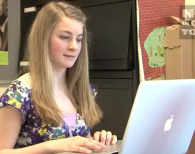
For educators, National Bullying Prevention Month is a great opportunity to discuss cyberbullying in the classroom.
In this Not In Our School video, “Students Take On Cyberbullying,” high school students tackle the problem of cyberbullying in their schools through a class discussion and presentation. They log onto Facebook and create a more positive online environment, addressing the problem of cyberbullying head-on.
Watch this short film with your students:
Discuss:
1. What strategies might students use to address the issue of cyberbullying?2. What challenges might students confront?3. What might be the consequences of doing nothing?
Several students in this film were invited to participate in a town hall for New York Digital Citizenship Day cohosted by Common Sense Media and MTV. Stay tuned for more later this week!
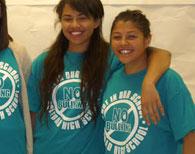
Soledad High School students come together to pledge against bullying. Photo Courtesy of Monterey County Office of Education.Soledad High School Assistant Principal Laura Eras and Intervention Specialist Myra Chavez called us from Soledad, CA, a small farming community located 25 miles southeast of Salinas. Using Not In Our School materials, they launched a weeklong anti-bullying campaign.

Palo Alto High interviews younger brother Noah Hornikat It Gets Indie last year. Photo Courtesy of Julian Hornik.
When Julian Hornik was cyber-bullied for being gay, he didn’t have to worry about having anything but the full support from his family.
In middle school, the young musician found derogatory comments on YouTube videos of his performances. Classmates created a Facebook page that targeted him for being gay. With the support of his family, he said it wasn’t hard for him to “push it away.”
Julian and his younger brother Noah are part of an extended family of people who support LGBT rights. While Noah has not personally experienced bullying, he believes the internet allows people to feel “safer and more confident” when they bully and harass others.
“They don’t have to see the impact,” Noah said. “People will go a lot farther.”
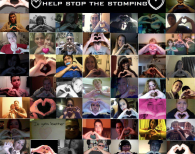
"Cyberbullying happens when teens use the internet, cell phones, or other devices to send or post text or images intended to hurt or embarrass another person." --National Crime Prevention Council
In the recent Not In Our School video, "Students Take on Cyberbullying," Watchung Hills Regional High School students confront the threat of cyberbullying--a rapidly growing phenomenon that is uniquely affecting an entire generation of technology-savvy middle and high school students across the nation.
In the video, we hear of students who have fallen victim to this increasingly alarming trend. Recent research conducted by the PEW Research Center Internet & American Life Project reported that 88 percent of students surveyed about cyberbullying have witnessed peers being mean or cruel online.
Cyberbullying takes bullying to a new level by following students even after they leave school campuses. For a generation that relies heavily on technology in education as well as social platforms, the negative consequences of unfiltered and anonymous interactions on the internet and through mobile phones are leaving their mark.
Taking a Stand Against Cyberbullying
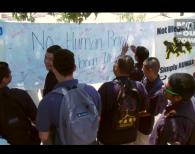
Working closely alongside Facing History and Ourselves, Not in Our School spent the past year documenting student efforts to address issues of concern in their schools. From posting positive messages on Facebook to taking on a social action project or simply speaking out against bullying, students across the nation have taken a step towards tolerance and acceptance with the guidance of their teachers.
Thanks to support from the Einhorn Family Charitable Trust, we produced five short films with accompanying Facing History lesson guides that address issues such as cyberbullying--and highlight peer-to-peer solutions.
To view the films and the accompanying lesson guides, follow the links below:
Students Take On Cyberbullying
A Facebook campaign to spread positive messages, invented to counter cyberbullying by Watchung, N.J. students.
Stand Up, Stand Out: No Checking, No Capping, No Bullying
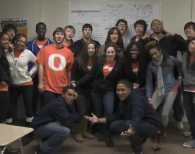
"Every time I see someone get bullied, I step in. No matter what age they are, if I know them or not, it doesn't matter." —Orange High School student
Today, we feature one of our newest Not In Our School videos. In this film, students from Orange High School in Pepper Pike, Ohio, identify bully zones around their campus and stage a flash mob performance in their cafeteria to highlight bullying they've witnessed: verbal, physical and cyberbullying.
To find out more about the Not In Our School initiative visit NotInOurSchool.org. For more free videos of students and teachers creating safer school environments visit NotInOurSchool.org/videos.
This video is also available on Teacher Tube.
Students from Palo Alto spoke passionately about their experiences dealing with ethnic and anti-gay slurs and cyberbullying at a Not In Our Schools event held at the Media Center last month. The school-community conversation focused on bullying and strategies for how to be an upstander. Here is a powerful example from the event.
A high school student talks about being the target of an ethnic slur on Facebook as part of a conversation about cyberbullying.
The event started off with The Working Group’s film Not In Our School: Palo Alto, which features leaders behind last year’s “Not In Our Schools” month, as well as highlights from the different activities across the district. Following the film, Becki Cohn-Vargas from the Palo Alto Unified School District led the group in discussion, touching on hate slurs, bullying, and standing up to make schools safe and inclusive.
Here is a teacher talking about her experience confronting hateful comments in her classroom:
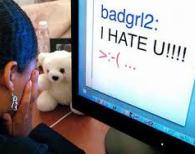
After a Palo Alto middle school student was the target of a student-led “I Hate [Student's Name]” Facebook group, some Silicon Valley parents are calling for a community dialogue about cyberbullying.
According to the Silicon Valley Moms blog, over 100 young people participated in the online group. Many of the public Facebook posts “ranged from insulting, rude comments to actual threats of violence” against the bullied student.
Although school district officials took measures to remove the Facebook group, some concerned residents are calling for a meeting about the harmful effects of intolerance and hate speech, and what the community can do to get to the root of the problem.
Parent Roxane Dover encourages Silicon Valley to stand together against cyberbullying in Cyberbullying: whose responsibility is it?:
